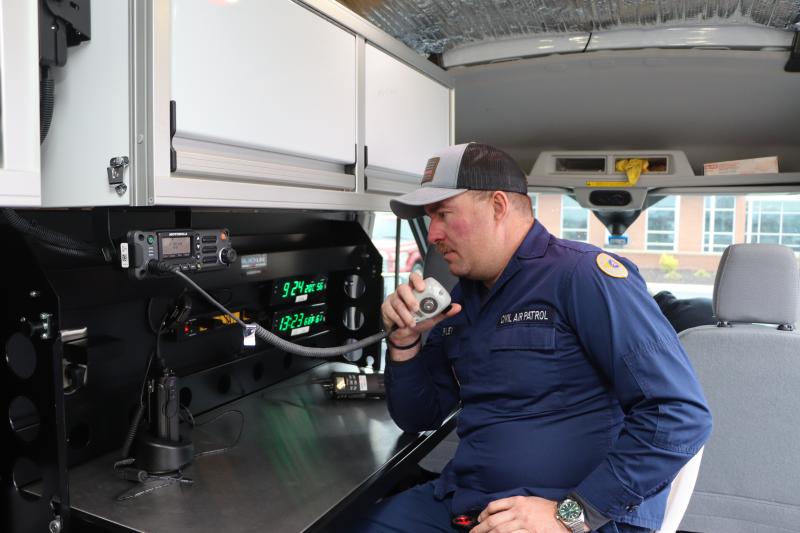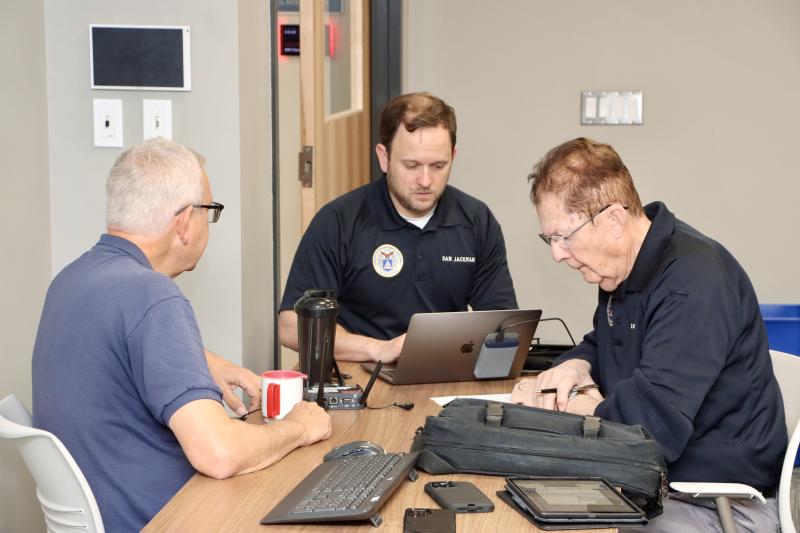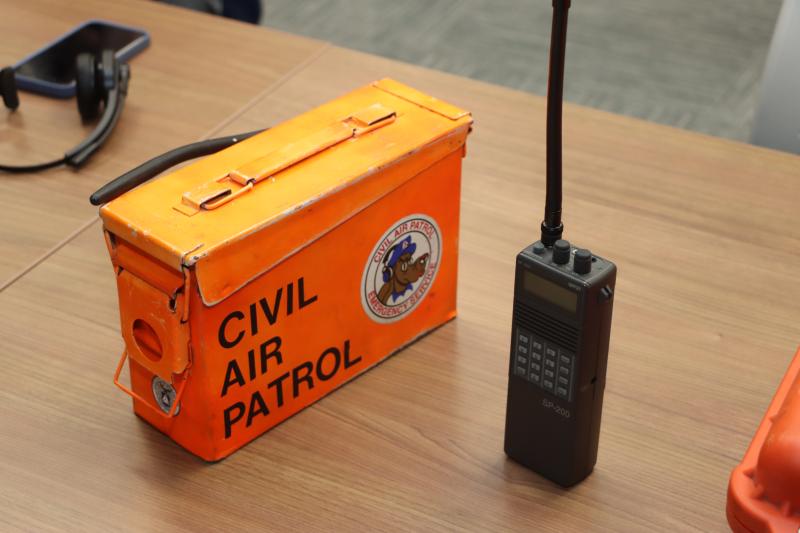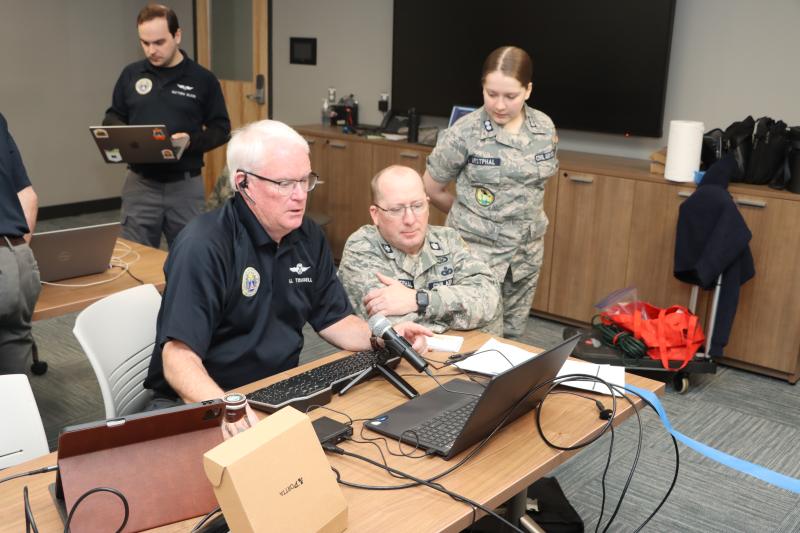Civil Air Patrol hosts search-and-rescue exercise in Georgetown
The mission was clear and urgent: Locate a small plane that went missing during a spring storm somewhere on Delmarva while flying from Maryland to New Jersey.
The storm spawned tornadoes and caused widespread flooding.
On this rainy Saturday morning, it was just a drill for the volunteers of the Delaware wing of the Civil Air Patrol’s Coastal Patrol Base Unit 2 Memorial Composite Squadron.
They gathered for the training exercise April 12, at the Sussex County Emergency Operations Center at Delaware Coastal Airport. The airport serves as an alternate to their primary location at Dover Air Force Base.
The simulated mission was practice for what the CAP could be called to do at a moment’s notice this time of the year.
“We’re the biggest county, so we get called on a lot,” said Lt. Col. Robert Turner, public affairs officer for the Coastal Patrol Base 2 Memorial Composite Squadron.
Bad weather grounded the CAP’s Cessna 182 for the exercise, so training focused on communications and cadet training.
“We can still get a lot of useful stuff done, just doing tabletop exercises and throwing out scenarios, putting it all into the system like you’re going to fly,” said Capt. Matthew Gilson, the incident commander for the day.
In the real world, the aircraft would fly a search pattern, homing in on a signal from the downed aircraft’s emergency locater transmitter, life-saving equipment found on most planes. The crew members would take photos and direct CAP ground teams and first responders to the scene.
For the exercise, the air operations team and CAP leadership worked inside, while a team of three young cadets received training outside.
Lt. Patrick Mead went through the list of equipment every team member needs to conduct a search, including a flashlight, safety vest, fire starter kit and good old duct tape.
He said one of the most important items is a waterproof notepad.
“It is important to jot down every single clue you find. Even if you don’t complete your mission, your information might be valuable to everybody else,” Mead told the cadets.
Another group of volunteers worked the radios inside the CAP’s mobile communications van. It was parked just feet away, but on a real mission, it could go anywhere to coordinate with aircraft in the air and people on the ground.
Following a natural disaster, the CAP is the Federal Emergency Management Agency’s primary source for pictures.
CAP volunteers would survey damage from above. They would then coordinate with Delaware State Police, Delaware Department of Transportation and other agencies to get help where it is needed.
They are hoping to soon be able to livestream video from their aircraft.
CAP also has a homeland security mission, surveying critical infrastructure like bridges and power plants.
“If we see a tanker truck parked under an overpass, that’s a red flag and we contact police. We’re looking for anything suspicious,” Turner said.
Turner said their Cessnas only cost $180 per hour to fly, as opposed to DSP helicopters that cost as much as $5,000 per hour. So, that makes them an economical asset.
He said their aircraft often monitor summer beach traffic, look for dangerous rip currents and take bird experts up to do the annual count of snow geese.
Delaware volunteers were also called to take supplies to North Carolina to help victims of Hurricane Helene last October.
“We were able to land at a smaller airport to get closer to where the help was needed. We ended up hopscotching to other airports too,” Turner said.
The unit also deployed its drone to Puerto Rico to survey infrastructure following a storm.
Coastal Patrol Base 2 Memorial Composite Squadron was established Dec. 1, 1941. Turner said it was the first CAP unit in the country to fly a mission.
A memorial at the Rehoboth Beach Bandstand honors the four CAP flyers who lost their lives in World War II.
Prior military experience is not required to volunteer for the CAP, but Turner worked on bombs and ammunition in the Air Force.
“You just need to be willing to help your community and your state,” Turner said.
Young CAP cadets can be seen working the crowd line at the Wings and Wheels event at Delaware Coastal Airport every October. Turner said one former cadet is attending the Air Force Academy.
More information on the CAP can be found at gocivilairpatrol.com.






Bill Shull has been covering Lewes for the Cape Gazette since 2023. He comes to the world of print journalism after 40 years in TV news. Bill has worked in his hometown of Philadelphia, as well as Atlanta and Washington, D.C. He came to Lewes in 2014 to help launch WRDE-TV. Bill served as WRDE’s news director for more than eight years, working in Lewes and Milton. He is a 1986 graduate of Penn State University. Bill is an avid aviation and wildlife photographer, and a big Penn State football, Phillies and PGA Tour golf fan. Bill, his wife Jill and their rescue cat, Lucky, live in Rehoboth Beach.






















































